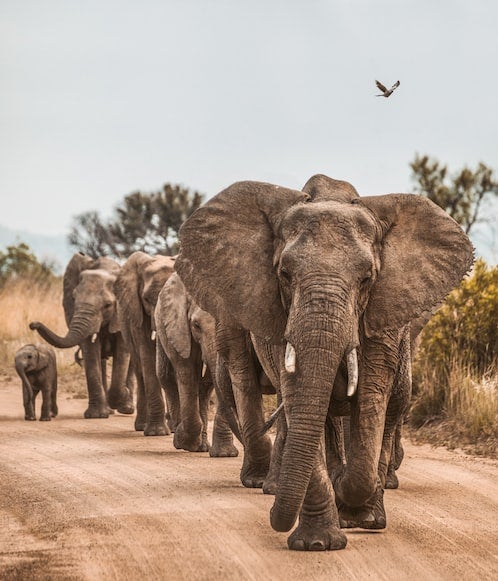Climate change is pushing Botswana’s elephants further south
As droughts become longer and more severe, herds are leaving their habitats in search of food and water

Your support helps us to tell the story
From reproductive rights to climate change to Big Tech, The Independent is on the ground when the story is developing. Whether it's investigating the financials of Elon Musk's pro-Trump PAC or producing our latest documentary, 'The A Word', which shines a light on the American women fighting for reproductive rights, we know how important it is to parse out the facts from the messaging.
At such a critical moment in US history, we need reporters on the ground. Your donation allows us to keep sending journalists to speak to both sides of the story.
The Independent is trusted by Americans across the entire political spectrum. And unlike many other quality news outlets, we choose not to lock Americans out of our reporting and analysis with paywalls. We believe quality journalism should be available to everyone, paid for by those who can afford it.
Your support makes all the difference.By Keletso Thobega for The Midweek Sun
Recent sightings of elephants in parts of Botswana where they are rarely seen is an indication of the worsening impacts of climate change that cause elephants to move to different areas, particularly towards the south in search of food and water.
The Botswana Elephant Management and Action Plan 2021-2026 indicates that as Botswana experiences extreme changes in temperature and precipitation under global warming scenarios, it is anticipated that these changes will impact wildlife conservation.
According to the document, climate change is increasing the frequency, severity, duration and extent of droughts and it is anticipated that species that need a lot of water, such as elephants, will seek supplies in areas where people farm.
The competition for limited water resources is responsible for escalating conflicts between humans and elephants. The impacts of elephants on susceptible vegetation will likely be amplified by climate change, the document states.
Recognising the value of its abundant wildlife resources, Botswana has set aside 17 percent of its land for wildlife in protected areas: National Parks and Game Reserves. However, because rainfall is seasonal and patchy, many wildlife populations, including elephants, are nomadic.
Nomadic wildlife utilise habitat that is outside the protected areas, including 23 percent of wildlife management areas, which means that cumulatively Botswana has allocated 40 percent
of its land to mass wildlife conservation but as resources stretch, wild animals, particularly elephants, are moving from those areas in search of food and water.
Botswana’s elephant population has risen significantly in the past few years to more than 130,000 according to the Department of Wildlife and National Parks, which is the world’s largest national elephant population.
Currently, an elephant census is underway in the Kavango–Zambezi Transfrontier Conservation Area (KAZA TFCA). The survey began on August 22, 2022 and is scheduled to be completed by November 30, 2022. It will cover Zimbabwe, Botswana, Namibia, Zambia and Angola.
A press statement from the KAZA Secretariat indicates that as things stand, aggregated figures from the five KAZA members amount to approximately 220,000 elephants in the region in an area of 520,000 square kilometres.
“This figure represents about half of the remaining savanna elephants found in Africa,” it reads.
The survey will also seek to understand the elephants’ migration patterns across countries, and the impact of factors such as climate change to the survival of the elephants.
Director of Wildlife and National Parks Kabelo Senyatso told the media that Botswana will carry out its own survey, using the same methodology as that used within the KAZA TFCA landscape.
He noted that this exercise will aid decision-making relating to elephants outside the KAZA TFCA landscape.
This article is reproduced here as part of the African Conservation Journalism Programme, funded in Angola, Botswana, Mozambique, and Zimbabwe by USAID’s VukaNow: Activity. Implemented by the international conservation organization Space for Giants, it aims to expand the reach of conservation and environmental journalism in Africa, and bring more African voices into the international conservation debate. Written articles from the Mozambican and Angolan cohorts are translated from Portuguese. Broadcast stories remain in the original language.
Read the original story here:
Join our commenting forum
Join thought-provoking conversations, follow other Independent readers and see their replies
Comments